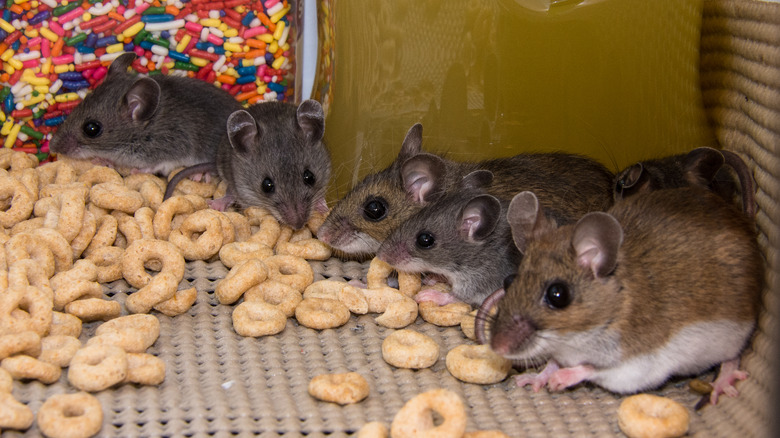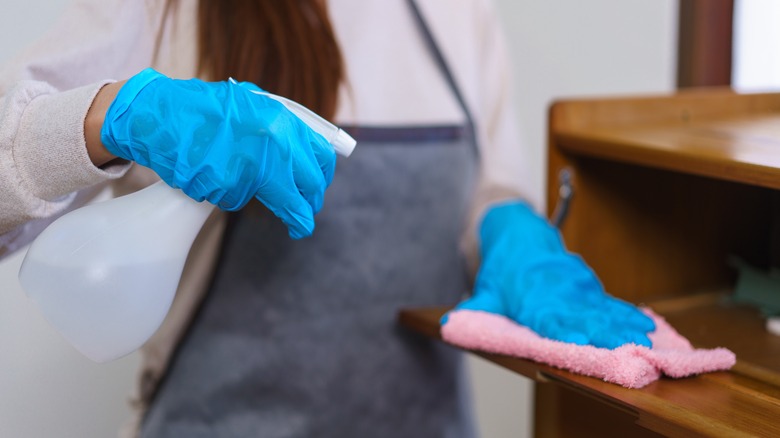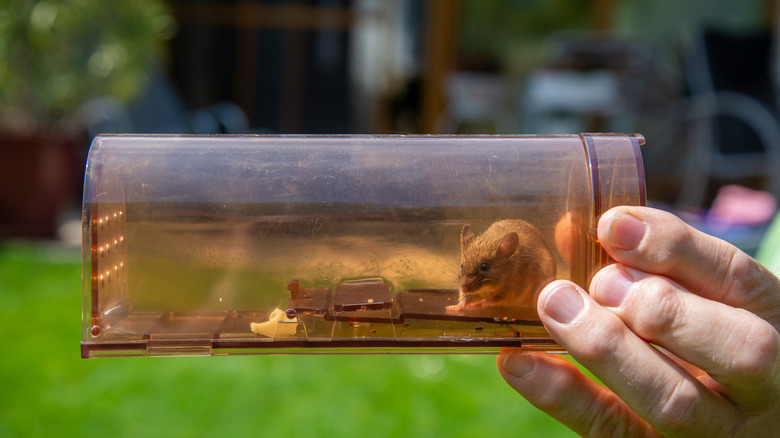Do This Immediately If You Find Mouse Droppings In Your Cabinets
You just got home from a glorious weekend vacation, and the last thing you want to see is something straight out of a horror movie — mouse droppings in your cabinets. Not exactly the welcome-home surprise you were hoping for, right? It's like your house turned into a rodent rave while you were away. But before you grab your suitcase and book another escape, let's tackle this problem head-on.
Mouse droppings in your house are more than just a gross inconvenience; they're a serious health hazard. These tiny pellets of doom can carry diseases like hantavirus, salmonella, and leptospirosis. Plus, they can trigger allergies and asthma. And that's why the first thing you should do upon spotting mouse droppings is clean them up quickly and safely — disinfect them before you dispose of them.
Now, you might be tempted to just grab a vacuum or broom and sweep those little nasties away. Hold your horses! That's the last thing you should do, and could even be causing you more problems than you could imagine.
Disinfect the mouse droppings before removing them
When it comes to cleaning up mouse droppings, vacuuming or sweeping can kick up harmful particles into the air, making it easier to inhale those dreaded germs. Instead, put on rubber gloves and a face mask to protect yourself and remove everything you can from the area. Once clear, start by spraying the droppings with a disinfectant or a mixture of bleach and water. This helps to kill any bacteria and viruses before you remove them.
Once soaked, use a damp paper towel to pick up the droppings and dispose of them in a sealed plastic bag. Continue doing this until the entire area has been cleaned of droppings, making sure you check around corners or in crevices. Finally, discard the gloves and wash your hands thoroughly.
Cleaning up the droppings is just the first step. Now, you need to clean and disinfect your cabinets to ensure no germs linger behind. Using a disinfectant, scrub the affected areas thoroughly. But if you don't want a repeat performance of this rodent rock concert, it's time to keep mice away from your home by laying some traps.
Use humane snap traps to stop the mouse problem before it begins
There are several types of traps you can use, from the traditional snap traps to catch-and-release traps that get rid of mice more humanely. Snap traps are generally effective and quick, but if you're not keen on dealing with, well, dead mice, opt for the humane traps. Just be sure to release the critters far away from your home, preferably in a field where they can reflect on their poor life choices.
Once your cabinets are clean and traps are set, take a moment to breathe. You've made some pretty big progress. But don't get too comfortable; mice are sneaky little creatures. They can find their way back into your home through the tiniest of cracks and gaps. Inspect your home for any potential entry points. Seal up holes around pipes, vents, and windows with steel wool or caulk. Rodents can't chew through these materials, so it's a good way to keep them out.
In the meantime, consider storing your food in airtight containers. Mice are often drawn to easy food sources, and your pantry is like an all-you-can-eat buffet for them. By locking up your food, you make your home a lot less appealing to these furry intruders. And don't forget to keep your kitchen clean. Crumbs and spills should be cleaned up immediately to avoid attracting more pests. That way, you should have fewer (and hopefully no more) mouse problems in the future.


